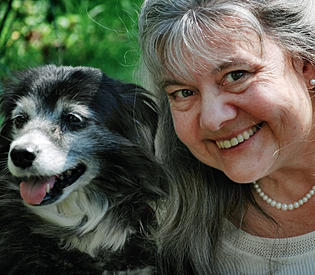December 19, 2011
It
is normal to want things and to get attached to that which is important to us.
People, places, and things share our existence and enrich the quality of our
life, or at least they should enrich our lives. Disentangling is not
about ending the good attachments we have in life. It is about shedding
unhealthy and dysfunctional attachments that detract or take away from the
quality of our life.
The
Diagnostic and Statistical Manual of Mental Disorders - IV (DSM-IV)
indicates that a disorder exists if whatever condition present causes
significant distress or problems in one or more important areas of one’s life.
These important areas of life include health, relationships, work, etc. A few
examples of such problems that can come from unhealthy attachments include:
Loss
. . . of job, of temper, of
friends, of family, or anything else we deem important.
Neglect.
. . of spouse, of children, of ourselves, of our health, of our work,
financial, or school-related responsibilities.
Failure.
. .to prepare for the responsibilities of life or to show up for life, for
example by isolating or staying in bed all day or all week not due to a
physical illness.
The
result of these losses, negligence, or failures on our part is that they take
up space in our mind, and our mental preoccupation with them drains us of our
life’s energy. The preoccupation of our mind will cause us to engage in
unhealthy behaviors. Pursuing, watching, sneaking, and above all waiting, drains
us causing us to neglect other more important areas of our lives. Our focus
narrows, and we concern ourselves only with the needs of the other person. As this
preoccupation with the other person grows, our Self will wither and die deep
down inside. When given the choice of meeting our own needs or that of another,
we will choose to neglect ours in favor of those of the other person. As the
unhealthy attachment continues to grow, we sink deeper into the hole we have
dug for ourselves.
Unhealthy
attachments rob us of our peace of mind. This concept is not new. The Buddha
(563-483 BCE) discusses attachment in his Four Noble Truths. Essentially he
said that suffering arises from attachment and it ceases when attachment to
desire ceases. The damaging effects of attachment are documented throughout
human history. How many conflicts are fought because a leader becomes fixated
on taking, gaining, or having something…anything? How much mayhem is caused by
someone whose romantic aspirations became larger than life and yet they chase
the affections of another to the brink of insanity? Things can easily get out
of hand without the ability to objectively view what is happening. It can
happen…you can get hooked…on anyone or anything. The key is to recognize the
attachment so you can begin to reverse the process.
It
is no surprise that attachment to another person can be so damaging to our
health and welfare. Yet it can happen, and we may be unable to comprehend what
is happening or when it is happening. We definitely feel its effects, whether
physical or emotional, yet we still think we can handle it if we just try a
little harder.
For
now just think about the relationships you currently enjoy and ask yourself if
any of them have become unhealthy or are draining you. Have any you used to
enjoy become just too difficult and yet you can’t figure out what changed?
Whatever you do, acknowledge it, but don’t dwell on it.
If
there is an unhealthy attachment to another person in your life, there is still
hope. You can disentangle, but in order to do that you must find YOU! And in my
next blog I will discuss how to go about finding YOU.









.jpg)






%20-%20Screened%20Porch.jpg)


